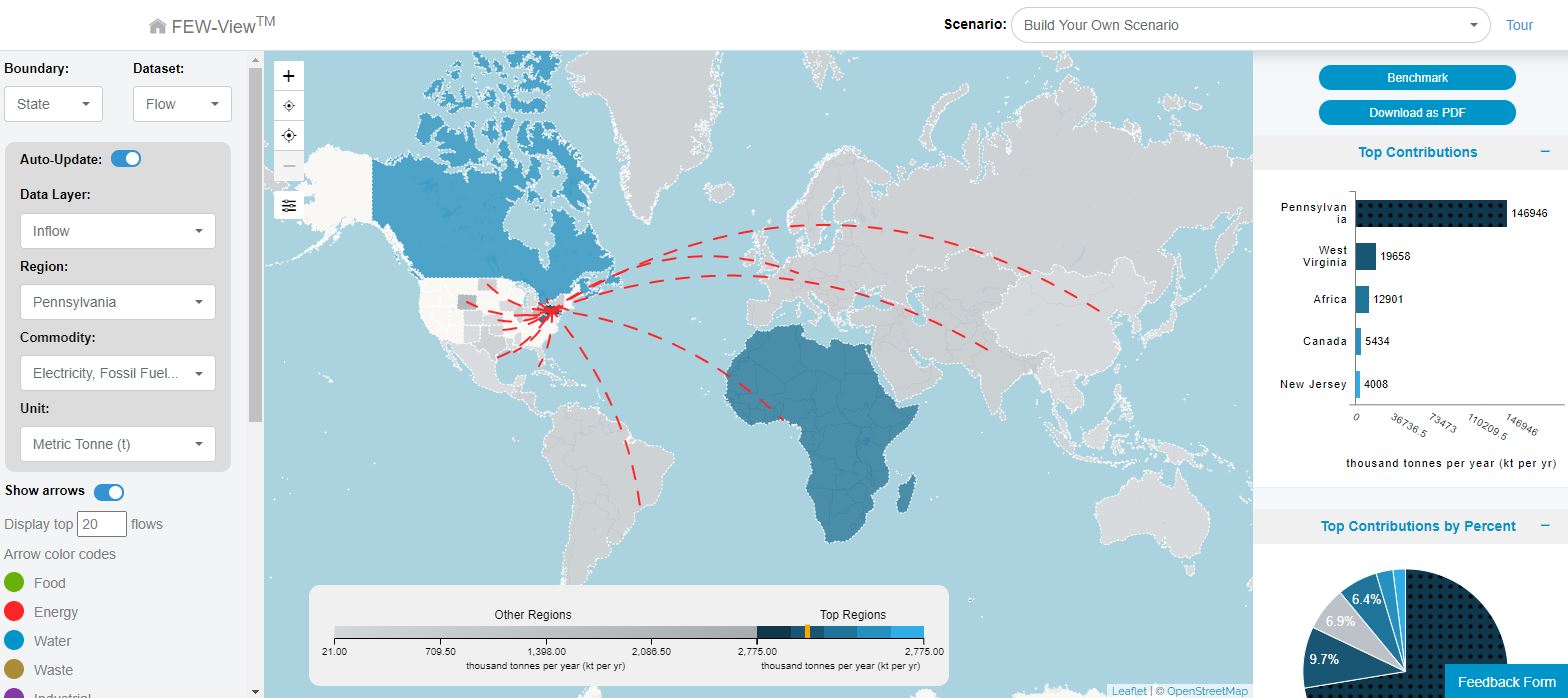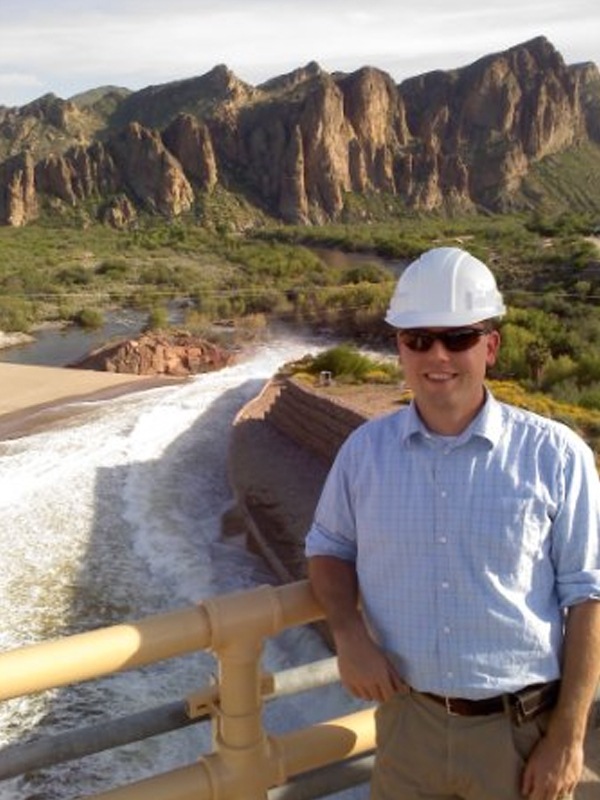Online Supply Chain Tool Available to Authorities, Public
Website for analyzing critical goods, supply vulnerabilities developed with Bridges
by Ken Chiacchia
Supply chains of goods like food, fuel and water have created wealth and greatly reduced human hunger. But they also bring with them vulnerabilities, when supplies are disrupted by natural disasters, human conflicts or sudden demand. Using PSC’s Bridges supercomputing platform, scientists at Northern Arizona University (NAU) are expanding their online tool for studying supply chains and are rolling out a program for sharing it with other researchers, governments and members of the public.
A screenshot from FEW-View, FEWSION’s mapping interface, showing sources of energy flowing into the Commonwealth of Pennsylvania
Why It’s Important
When it comes to getting what you need, the modern, connected world cuts both ways. It gives us tropical fruit in the dead of winter. It means crop failures in the U.S. no longer lead to widespread starvation. But it also means that, in the beginning of a pandemic, you may not be able to get medications or medical equipment from the opposite side of the world any more. When it comes to supply chains of critical goods—which can be anything from water to food to fuel to medicines to computer chips—it isn’t always easy to see in a timely way how a sudden bottleneck can affect our ability to bring what we need to where we are.
“[Supply chains] are the flows that underlie the economy, and they connect us to people all over the world … Those connections create efficiencies; they are a foundation of our wealth and prosperity and resilience. But those connections also carry risks and [environmental] impact.”—Benjamin Ruddell, Northern Arizona University
That’s why Benjamin Ruddell and Richard Rushforth of NAU developed a set of National Science Foundation (NSF)-funded online tools called FEWSION. The first of its kind to integrate data for many national supply chains in one package, this freely available group of computer aids can help authorities decide whether an impending trade war with a foreign country will produce a critical shortage in the U.S. It can help governors tell whether a storm barreling down on Houston could disrupt gasoline supplies in their states. It can help a rural county determine how well its water supplies would hold up in a drought—and identify alternative sources.
But the first version of FEWSION had limitations. For one thing, it couldn’t trace supply chains over time. It also consumed all the time the team was able to get on computing resources at NAU. To take FEWSION to the next level, the collaborators needed vastly more computing power.
How PSC Helped
Adding features such as time tracking created a vast increase in the amount of data FEWSION would have to handle. The data approached the petascale, involving quadrillions (1 followed by 15 zeros) of data elements. Handling that volume of information smoothly, for users without heavy technical training, was going to be a computational challenge. The NSF-funded Bridges platform at PSC—which they chose as the best fit after sampling a number of systems in the NSF XSEDE network of supercomputers—offered the scientists the computing power and ability to handle the massive datasets that they needed.
“Version one of our dataset is just a snapshot of the year 2012. It’s more limited and not as full featured, and that version of the dataset consumed our university cluster at Northern Arizona University … Then we started engineering the second version of the dataset, which is a time history and adds more details to the calculations. That is a geometrically larger computational problem. We couldn’t do it with a university cluster … So we tapped [the] NSF XSEDE network and have been working with supercomputing experts on that … It has led us through a couple of different possible architectures and platforms to end up with Pittsburgh.”—Benjamin Ruddell, Northern Arizona University
The Bridges-powered expansion of FEWSION has enabled the NAU team to begin deploying FEWSION for Community Resilience Network™ (F4R™), a citizen-led effort to collect supply chain data for critical supplies and make it available for public use. This unique tool will allow individual citizens, nonprofit organizations, companies, and governments to study and understand the local, “last-mile” supply chains of specific interest to them. Another important tool is the team’s mesoscale FEW-View™ tool, a mapping interface for FEWSION that displays supply chain analysis for entire cities and communities.
Using map-based tools, FEWSION showed the NAU collaborators how, for example, the city of Flagstaff, where NAU is based, depends on food from outside its region. Cattle ranges nearby produce beef, and the area has regional factories that produce lots of dog food and, of all things, ice cream cones. For about a month, and in a good year, local producers supply a bumper crop of apples. Of course, these products alone can’t feed the area, and getting other food products depends in part on exporting those goods. Importantly, the analysis shows where the weak links are and how the region can guard its food supplies by identifying alternative sources.
“The FEWSION for Community Resilience Network offers a participatory process that lets students or community members, or emergency managers, or whoever … to map their community supply chains out in detail and look at who runs their supply chains, how they work, where their connections are … and hold data-driven conversations … to find solutions that make the community more sustainable and more resilient.”—Benjamin Ruddell, Northern Arizona University
The NAU scientists are preparing a series of papers on their Flagstaff analysis. They’ve used FEWSION for papers on the fresh-water supply throughout the U.S., analyzing the cost of both direct water use and costs through agricultural and industrial uses, including methods for improving water use, which you can read here, here and here. They’ve also contributed to a paper on how beef-production water use affects wild fish populations, here.
Through F4R, they’re also recruiting new communities, adding new research collaborators and offering consultation to communities and local and regional governments on how to use FEWSION. You can find more information about F4R here.
Benjamin Ruddell, Northern Arizona University



